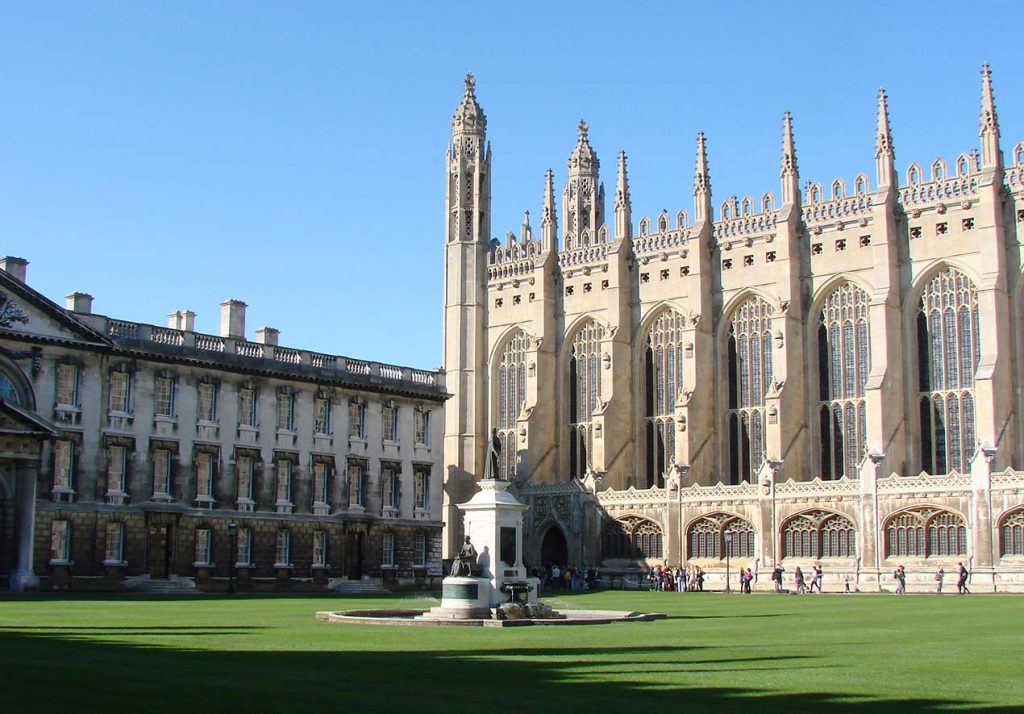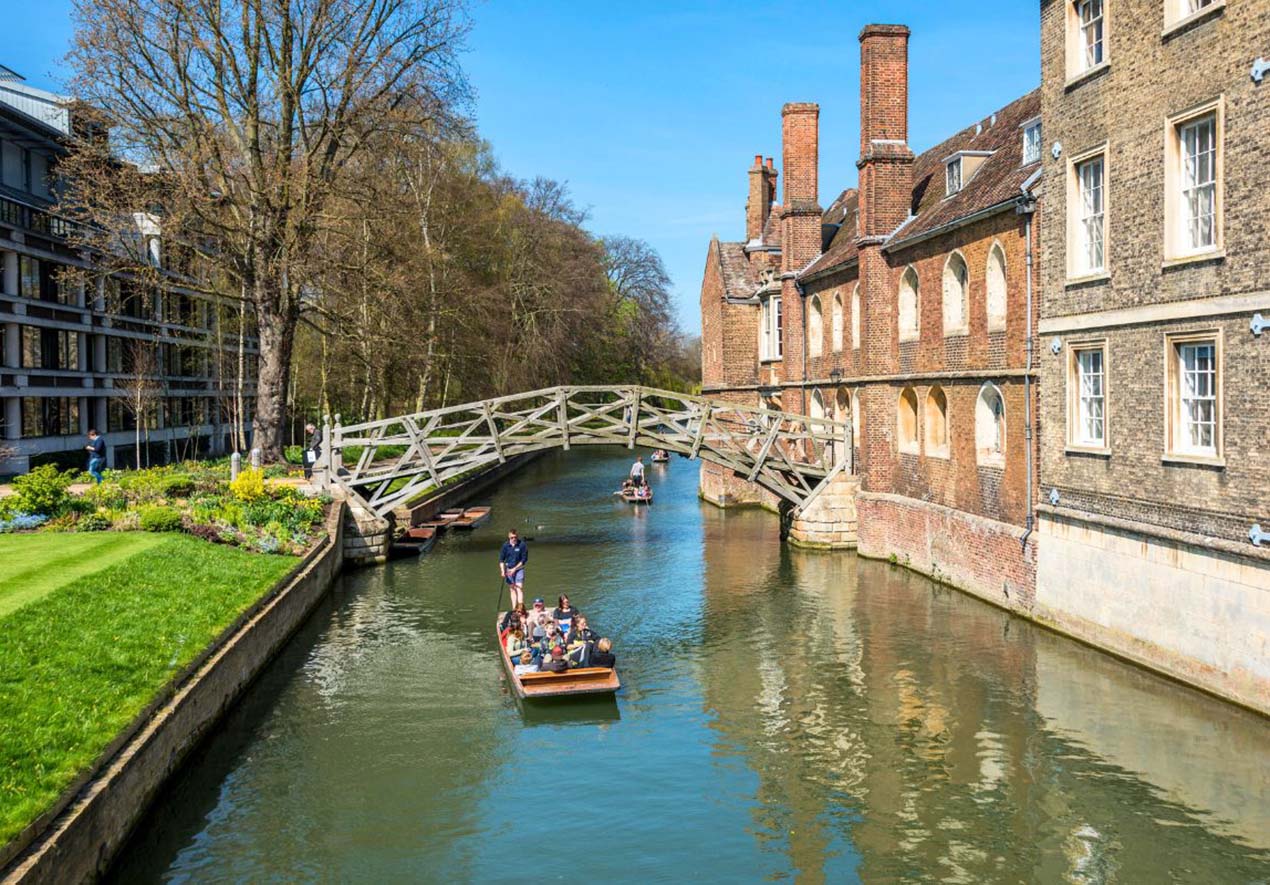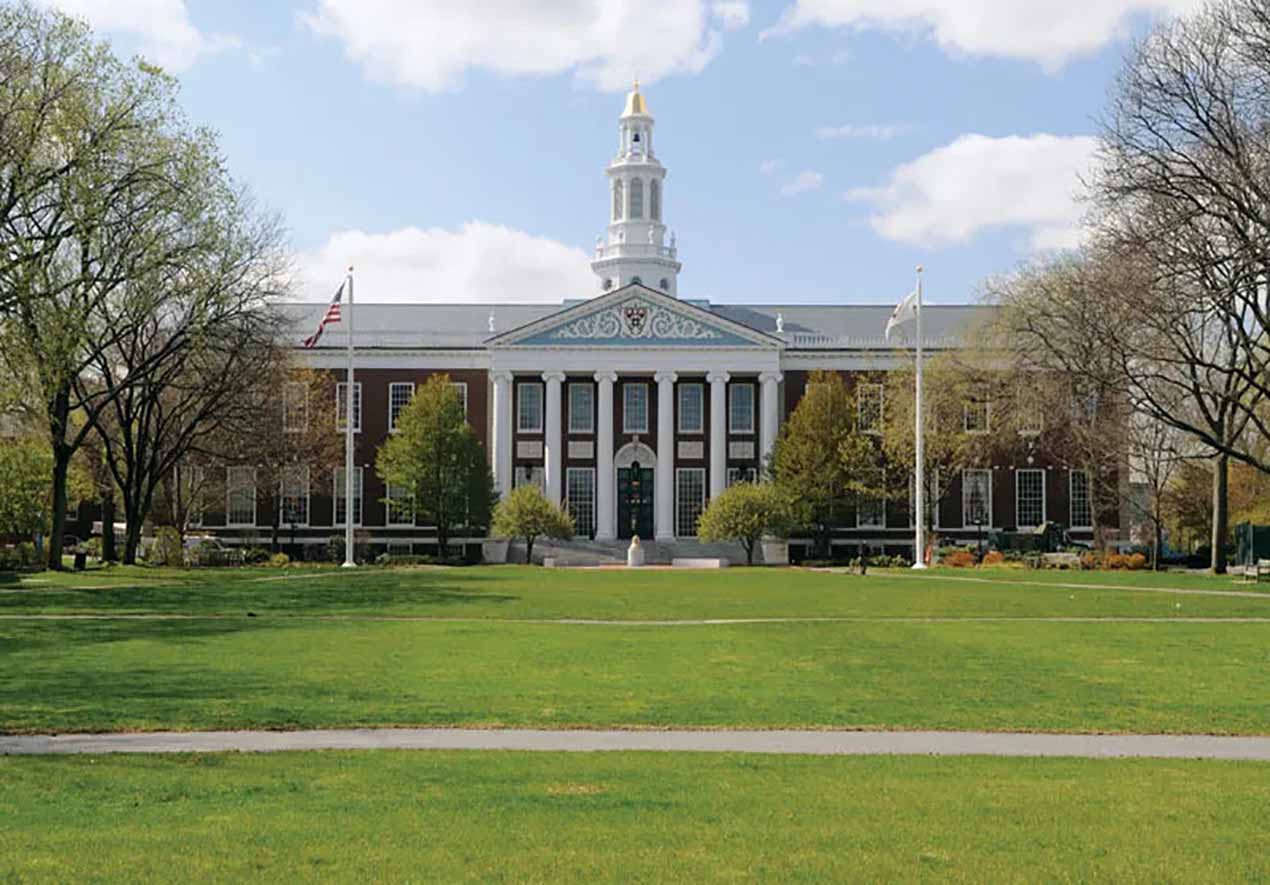I embarked on an enthralling journey to unearth the hidden treasures of Cambridge, England. This city, celebrated for its renowned university and rich cultural legacy, is a tapestry of historical structures that have withstood the ravages of time. I will recount my personal sojourn to three enchanting locales, offering profound insights, pragmatic travel tips, and wholehearted recommendations for kindred history aficionados.
My Voyage: Unveiling Cambridge’s Architectural Treasures
King’s College Chapel
Location: King’s Parade, Cambridge, CB2 1ST
Embarking on my architectural odyssey at the illustrious King’s College Chapel was nothing short of a profound experience. This quintessential masterpiece of English Gothic architecture, nestled in the very heart of Cambridge, was easily accessible on foot or by bicycle from the city center. Even the Cambridge Railway Station was just a leisurely stroll away, making it a convenient destination for travelers and locals alike.
Upon arrival, I learned that while some ceremonies and services were open to the public free of charge, ordinary visitors like myself incurred an entrance fee of £12. However, concessions were generously offered to students and children, making it an inclusive and accessible attraction.

Stepping through the chapel’s imposing doors felt like a revelation. The grandeur of its fan-vaulted ceiling, the intricate beauty of the stained glass windows, and the palpable weight of history that surrounded me as I explored its hallowed halls were nothing short of awe-inspiring. I was fortunate to time my visit with a choral evensong service, an experience that added a transcendent aura to my journey. The chapel’s acoustics were truly remarkable, making it a favored venue for concerts and artistic performances. Climbing the tower to savor panoramic vistas of the city was a singular experience that should not be missed, offering a breathtaking perspective of Cambridge’s historic landscape.
It often hosts distinctive events, concerts, and liturgical services, each providing a unique opportunity to immerse oneself in its splendor and historical significance.
The Fitzwilliam Museum
Location: Trumpington Street, Cambridge, CB2 1RB
My visit to the Fitzwilliam Museum was a delightful experience, and its convenient location in close proximity to the city center made it easily accessible by foot or bicycle. As I approached this cultural gem, I couldn’t help but notice its impressive neoclassical façade, which seemed to invite me into a world of art and history. The museum’s proximity to other renowned landmarks such as King’s College and the Senate House made it a perfect addition to my exploration of Cambridge.
One of the most remarkable aspects of the Fitzwilliam Museum is its policy of free admission, although voluntary contributions are warmly encouraged to support its ongoing conservation efforts and exhibitions. This generous approach ensures that art and culture are accessible to all.
Stepping inside, I was immediately struck by the vastness and diversity of the museum’s collection. The Fitzwilliam houses an extensive array of European art and antiquities spanning centuries, offering a captivating journey through the evolution of human creativity. I found myself entranced by the resplendent paintings, sculptures, and decorative arts on display. The museum’s Egyptian and Greek collections, in particular, were nothing short of extraordinary, transporting me to distant civilizations and ancient epochs.
Navigating the museum’s expansive galleries can be a rewarding but daunting task, which is why I wholeheartedly recommend acquiring a museum map upon entry. With the aid of this map, I was able to explore the collection with ease, ensuring that I didn’t miss any of the museum’s treasures. It allowed me to embark on a chronological and global pilgrimage through the world of art and history, making my visit to the Fitzwilliam Museum both educational and deeply enriching.
Wren Library, Trinity College
Location: Trinity College, Cambridge, CB2 1TQ
Trinity College, home to the illustrious Wren Library, is nestled right at the heart of Cambridge, making it a central and easily accessible destination, surrounded by other historic sites. My journey to Trinity College was a pleasant walk from the city center, and I noted that it’s equally convenient to explore by bicycle. For those eager to learn more about this historic institution, guided tours of the college are readily available, offering a deeper insight into its rich heritage and architectural marvels.
To gain access to the Wren Library, one simply needs to pay the admission fee for Trinity College, which amounted to £10 during my visit. This fee includes the privilege of exploring the college’s many treasures, with the Wren Library being a prominent highlight.

The Wren Library, ensconced within the splendid confines of Trinity College, is a hidden gem that should not be missed. Designed under the architectural guidance of the renowned Sir Christopher Wren, the library is a masterpiece of elegance and craftsmanship. Stepping inside, I found myself in a haven of tranquility, surrounded by a treasure trove of rare books and manuscripts. It’s a bibliophile’s dream come true. During my visit, I had the privilege of perusing original works authored by luminaries such as Isaac Newton and Lord Byron. The interior of the library, adorned with exquisite wooden bookshelves and bathed in soft natural light, creates an atmosphere that is both conducive to scholarly contemplation and a feast for the eyes.
Trinity College frequently organizes open days that allow visitors access to the library and other aspects of the college. I highly recommend checking their website for information about upcoming open days and guided tours. It’s a fantastic opportunity to delve deeper into the rich history and cultural significance of Trinity College, making your visit even more rewarding and informative.
Guided Exploits: Ponder partaking in guided tours at these hallowed sanctuaries to glean deeper insights into their historical significance.
Photographic Etiquette: It is prudent to exercise discernment regarding photography restrictions, particularly in delicate areas such as libraries and chapels. Observing these regulations is an act of reverence that preserves the sanctity of these treasures.
Inquire Regarding Operating Hours: Be assiduous in verifying the operating hours of your chosen destinations, as they might fluctuate contingent on the season, renovation schedules, or ongoing events.
Student Benefactions: If you are a student, it is prudent to have your student ID card in tow, as myriad attractions extend discounted admission to scholars.
Four Further Architectural Marvels in Cambridge:
The Mathematical Bridge:
Nestled within the confines of Queens’ College, the Mathematical Bridge stands as a remarkable testament to human engineering and architectural prowess. Crafted entirely from wood, this bridge is not only a functional structure but also a masterpiece of design. It serves as a symbol of ingenuity, showcasing the incredible capabilities of mathematics and craftsmanship in creating a structure that defies gravity. As you stroll across its elegant curves and intricate lattice of wooden beams, you can’t help but appreciate the skill and creativity that went into its construction. The bridge also offers a serene and picturesque setting, making it the perfect location for a contemplative walk. Surrounded by the tranquil beauty of Queens’ College and the serene waters of the River Cam, it provides an idyllic escape from the hustle and bustle of everyday life.
St. John’s College:
A visit to St. John’s College is a journey into the heart of Cambridge’s rich history and architectural grandeur. The highlight of this prestigious institution is the magnificent St. John’s College Chapel. Its soaring spires and intricate Gothic architecture make it a true masterpiece of religious art and a must-see for any visitor. As you explore the college grounds, you’ll also have the opportunity to meander through the picturesque surroundings, which include the renowned Bridge of Sighs. This iconic covered bridge, with its stunning arches and ornate detailing, provides a sense of timeless beauty and adds to the charm of St. John’s College.
Anglesey Abbey:
Located just a short distance from Cambridge, Anglesey Abbey is a treasure trove of history and natural beauty. The estate, owned and preserved by the National Trust, features a historic house that exudes character and elegance. With its period furnishings and rich history, a tour of the house offers a glimpse into the lives of the families who once called it home. Beyond the house, the resplendent gardens of Anglesey Abbey are a horticultural delight, boasting a diverse array of plants, including vibrant flower displays, tranquil water features, and meandering pathways that invite exploration. One of the notable attractions at Anglesey Abbey is the operational watermill, where you can witness the fascinating process of grain being ground into flour using traditional methods. It’s a place where history and nature harmoniously converge.
Fellows’ Garden, Clare College:
The Fellows’ Garden at Clare College offers a serene and enchanting respite from the bustling city of Cambridge. Tucked away within the college grounds, this hidden gem provides a tranquil interlude amidst the hustle and bustle of academic life. As you enter the garden, you’ll be greeted by beguiling vistas of the River Cam, where the gentle flow of water adds to the sense of serenity. The garden itself is a haven of natural beauty, with well-tended lawns, vibrant flowerbeds, and charming pathways that wind their way through the lush greenery. It’s a perfect place for quiet reflection, leisurely walks, or simply taking in the stunning views of the river and the surrounding landscape. Whether you’re a visitor or a member of Clare College, the Fellows’ Garden offers a peaceful escape where you can connect with nature and find solace in its beauty.
Cambridge’s temples and landmarks proffer an enthralling odyssey through the annals of history and the epochs of architectural evolution. From the majesty of King’s College Chapel to the cultural riches of the Fitzwilliam Museum and the serenity of the Wren Library, these locales furnish a glimpse into the city’s opulent heritage.



